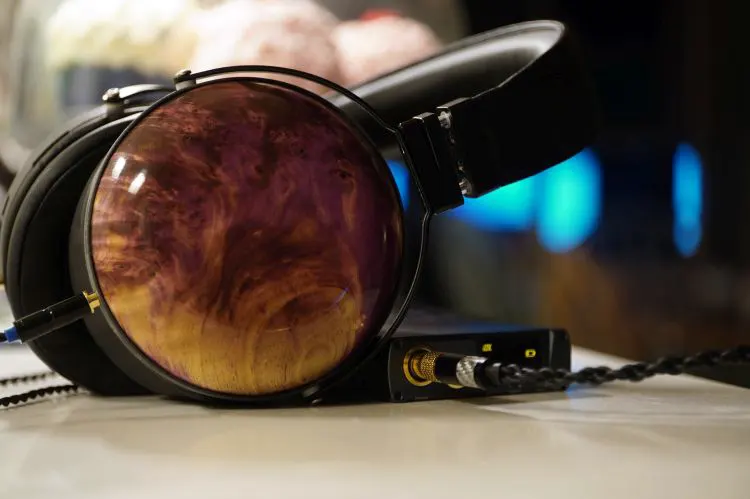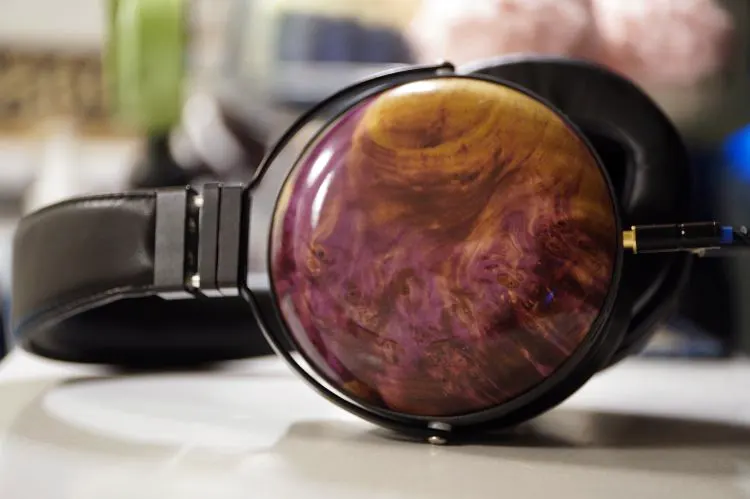Sound Impressions
Bass
Usually, planar magnetic headphones are all about the bass experience but in this case, the overall base depth and quantity factor are relatively mild.
I would not call the Starry Night V2 bass light I would call it bass moderate. Even with significant bass EQ active, this headphone is not one I would consider a bass head experience.
The Starry Night V2 isn’t extremely well versed with bass and low-end responsiveness meaning in this context that I cannot raise the bass a small amount and have the headphones respond in a congruent and parallel manner reflecting an equal amount of tactile audible bass.
By that I mean when I raise the base up to quite a significant level on my source music player or my amplifier, the headphone low-end quantity levels do not change significantly.
The overall fidelity factor, however, is supremely excellent and among the purest bass experiences I’ve had in a closed-back headphone. The overall purity factor is exceptional. I do not have any other closed-back headphones that can compare with the quality of the Starry Night V2.
Regarding raw quality, the Starry Night may rate as the overall cleanest and most crystalline bass I’ve yet heard in a planar closed back.
I require reaching out to an electrostatic Stax 007 to bridge the gap, as this model has stopped sounding like a planar and feels like a hybrid between a good electrostatic headphone and a high-end planar headphone.
Mids
The Starry Night V2 has the mids in a middle-ground area, but maybe closer to forward than dead neutral. They are not extremely forward, and they are not recessed.
For me, these descriptive tiers are split up into 3 sections: Mid-recessive, mid-neutral, and mid-very-forward. The Starry Night V2 is right between mid-neutral and mid-very-forward in terms of where the vocals are presented. A step or two away from what I and I think most other reviewers would consider a “forward mids presentation”.
Vocals appear large, prominent, and engaging in a physical tactile sense of the word. The large imaging factor of this headphone helps with that.
If you are into Jazz standards, you’ll enjoy these headphones quite fiercely. Even though most Jazz standards may be more suited for a slower, more mellow, and thick experience, this headphone still presents midrange in an excellently unbiased manner.
I am on the side of preference toward slow and methodical in tone and presentation, which is the opposite of the Starry Night V2.
These headphones are extremely fast, lightning quick. There is no slow decay factor anywhere. It’s so fast on the draw, that some vocals feel like they are just popping out of a void, akin to, again, good electrostatic headphones from Stax.
A while back, I reviewed the Stax SR-L700MK2, which I found to be slower sounding than the Stax 007. If you were to ask me to compare, I would say the Starry Night V2 is right on point with the SR-L700MK2 in terms of fidelity.
Despite these headphones having opposite tones, (one is fast and pure, the other is slower and thick feeling), it is easy to gauge the literal sound clarity between them as validly similar.
Treble
Similarly, to the bass and mids, the treble is hyper-pure. If you like clean highs, the Starry Night V2 are the ones you should be aiming your sights on.
True, I prefer a warm and thick appeal. However, as a reviewer, my preferences are immaterial. These headphones are sublimely pure feeling from top to bottom. And yes, the reports of the Starry Night V2 having an excellent slam are all accurate.
This headphone kicks like a mule sometimes. The treble is not icy, nor too hot, but the physical impact is high. A mellow headphone, this is not. Instead, it is extremely engaging, energetic, and lively.
Interestingly, a side-by-side comparison with another great closed-back headphone, the dynamic driver beyerdynamic T5 Gen 3, which sounds comparatively quite hazy.
I wouldn’t discount the Audeze Maxwell either. Despite it being a wireless model, the quality is absurd and punches above its price tag easily.
In that regard, the Maxwell was the new top closed-back I had in my entire inventory of headphones that I’ve reviewed but the Starry Night V2 is a step or two superior in fidelity across the board.
Although again, two totally different feelings. I consider the Maxwell a natural tone, and the Starry Night v2 a cleaner tone with more contrast.
Imaging
The sound staging aspects of the Starry Night V2 are also very good and similar to the Fostex TH600 and TH909, it performs admirably as well here.
The width is very good for a closed headphone and the height is logically coherent with respect to width, meaning one of them is not way bigger or way smaller. The depth of field and realism are also very good.
Expensive closed-backs, lately, have been finding ways to optimize sound dampening and pad usage in ways nobody ever did prior.
The result has been a plethora of improved soundstage performances in what are considered closed headphones. Without airflow, somehow, they are managing to expand the soundstage elements in a closed cup.
Select Comparisons
Audeze Maxwell
I get it. The Maxwell is only $300 but you don’t understand that it dropkicks a lot of headphones under the $1000 tier without any effort.
The Maxwell has the same type of bass quantity factor and one that has some response to adding more bass issues that I would like fixed and revised in any V3 of the Starry Night.
I just want more bass than what is there. The tone of the Starry Night is supremely clinical, while the Maxwell has some warmth and coloration striations to it.
Beyerdynamic T3 Gen 3
Previously, the T3 was one of the best closed-back headphones out there, one I considered “better” than the Fostex TH600 and similar models, even the older Audeze LCD-XC.
However here, I believe the Starry Night V2 has dethroned it as the alpha closed back in my collection.
The Beyerdynamic is a much smaller and more focused feeling in staging, the Starry Night V2 is a more spacious and airy feeling. The tone is denser and thicker on the T5 and thinner and more loose feeling on the Starry Night V2.
Fostex TH900
Almost 10 years ago I reviewed the Lawton enhanced TH900 from Fostex. To this day, I consider the TH900 the poster child for what not to make a headphone sound like in terms of slam factor.
The Starry Night v2 doesn’t hit as hard but approaches that same level of physical strike factor when the track is highly energized.
If any subjective dislikes exist, that would be it. Just that it hits hard sometimes and is snappy in terms of physicality. However, the TH900 sounds grainy and lacks depth of field compared to the Starry Night V2.
If you mega-evolved a TH900 and if it were a Pokémon, it would turn into the Starry Night. The TH600 is the ‘Charmander’, the TH900 w/mods would be the ‘Charmeleon’, and the Starry Night V2 would be the holographic 1st edition ‘Charizard’.
Our Verdict
The Starry Night V2 is a crazy beautiful-looking closed-back planar magnetic headphone. This wood coloration made me drop my jaw when Marcus first showed it to me. As soon as I saw the pictures of it, with that beautiful purple swirl design in the cups, I just about lost it.
The headphones might require a small nuclear blast to power, but you can still get a very good sound out of a good headphone amp like the Burson Conductor 3.
The imaging factor is very aired out, probably one of the best imaging factors in a closed back I’ve heard in years.
The fidelity is sublime, a very pure feeling. Outside of being very comfortable, but heavy, the experience is highly engaging and very pure in tone and texture. This is a wonderful headphone for anyone who likes that pure tone flavor.
SJY Audio Starry Night V2 Technical Specifications
- Impedance: 10 Ohm
- Driver: 80mm In-House planar
- Weight: 500g ~ 520g
- Sensitivity: ~87dB/mW
- *Power requirement* : 1 Watt
- *Does not work with tube or hybrid amps*
Includes
- Cable: 2M (3.5mm to duel 3.5mm)
- Pads: Angled Protein leather
- 2 years driver replacement warranty





